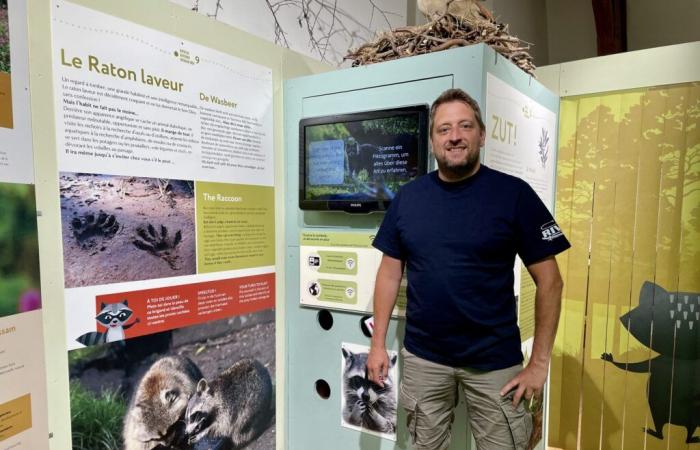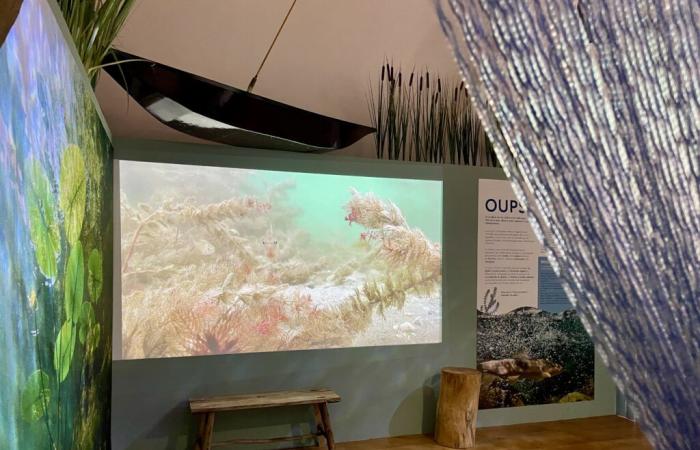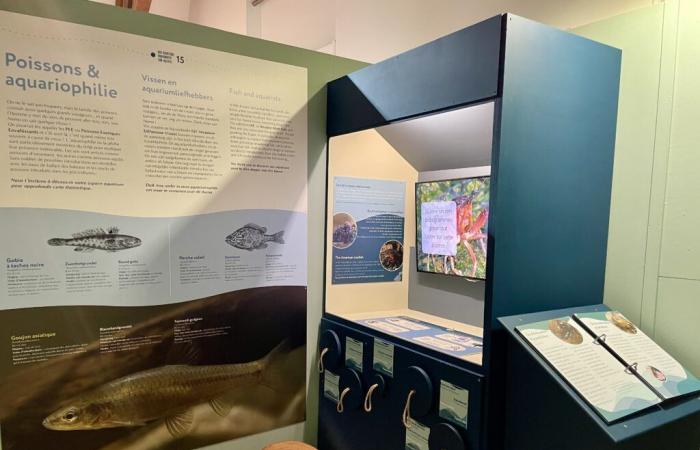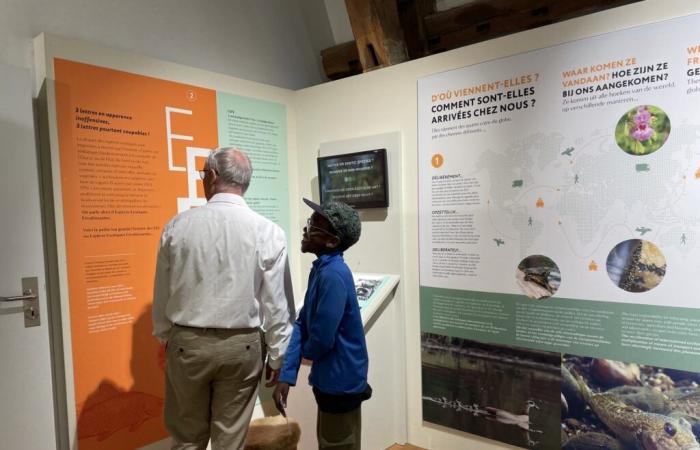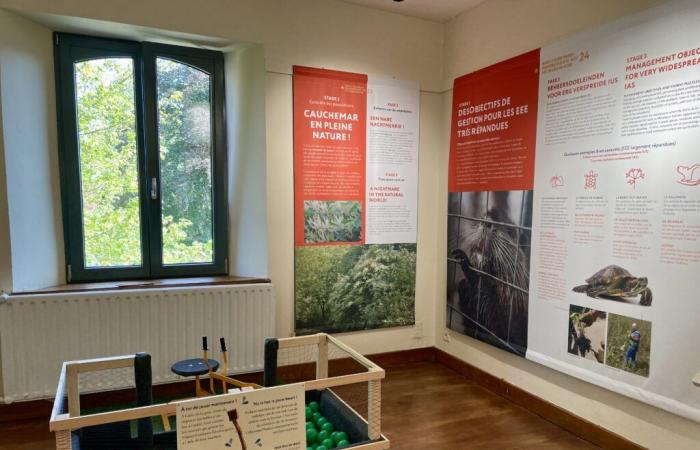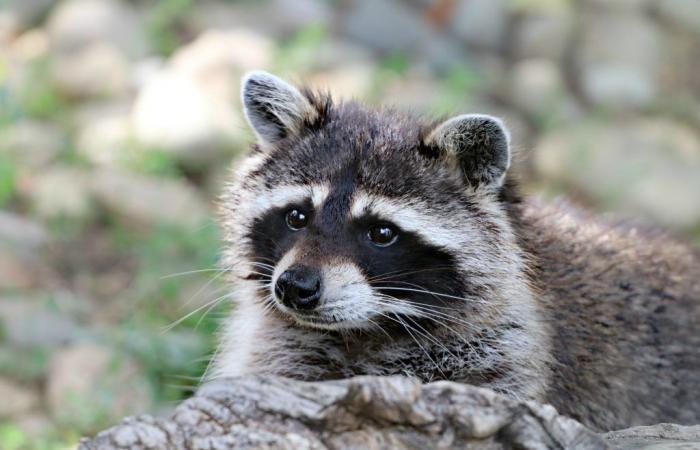October 1st is International Raccoon Day. On this occasion, we went to discover the new exhibition on invasive species at the Riveo center.
“Stop Invasions” is the name of the new exhibition at the Riveo centre, the river interpretation centre located in Hotton (in the province of Luxembourg). Throughout seven rooms full of activities, decorations and explanatory panels, you can discover the invasive species that endanger the biodiversity of our country!
The exhibition is very interactive, and there are lots of activities to do. If you want to do it with your family, you will receive an explorer’s notebook to complete! “It is designed for families and children from 5 years old, explains Philippe Struys, facilitator at the Riveo center. For classes, we have prepared special activities with a guide on the exhibition, but also at the water’s edge and in our other facilities! We have activities adapted from kindergarten to secondary school.
What is an invasive species?
“It is a species that invades a territory, develops to the detriment (to the disadvantage) of other species that were already there. They take their food, their territory… And that means that because of invasive species, it endangers other species.”
Several types must be distinguished:
- Invasive alien species (IAS) : these are invasive species that live outside their natural range. For example, the raccoon originally comes from North America and Asia. There should normally be none in Europe!
- Invasive native speciess: these are species that live in their natural territory, but which develop too much and cause problems. “For example, wisteria, which is a purple plant native to North America and Asia, was brought here because it is pretty and adorns (decorates) gardens and parks. But it does not pose a problem, because it does not spread everywhere.”
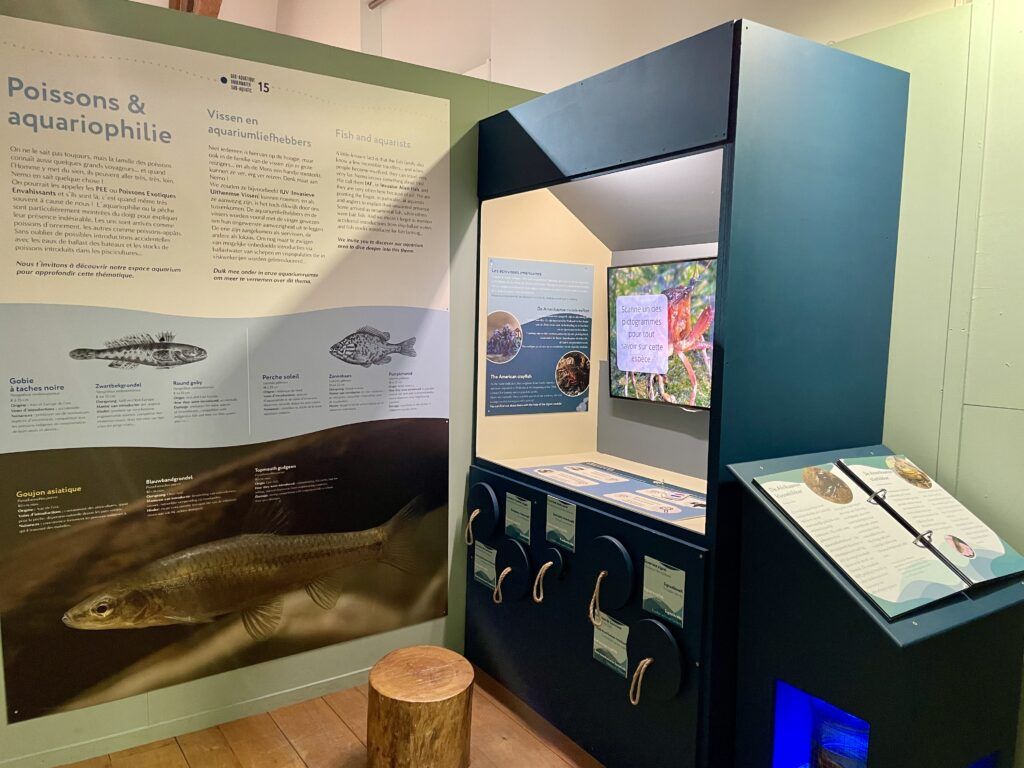
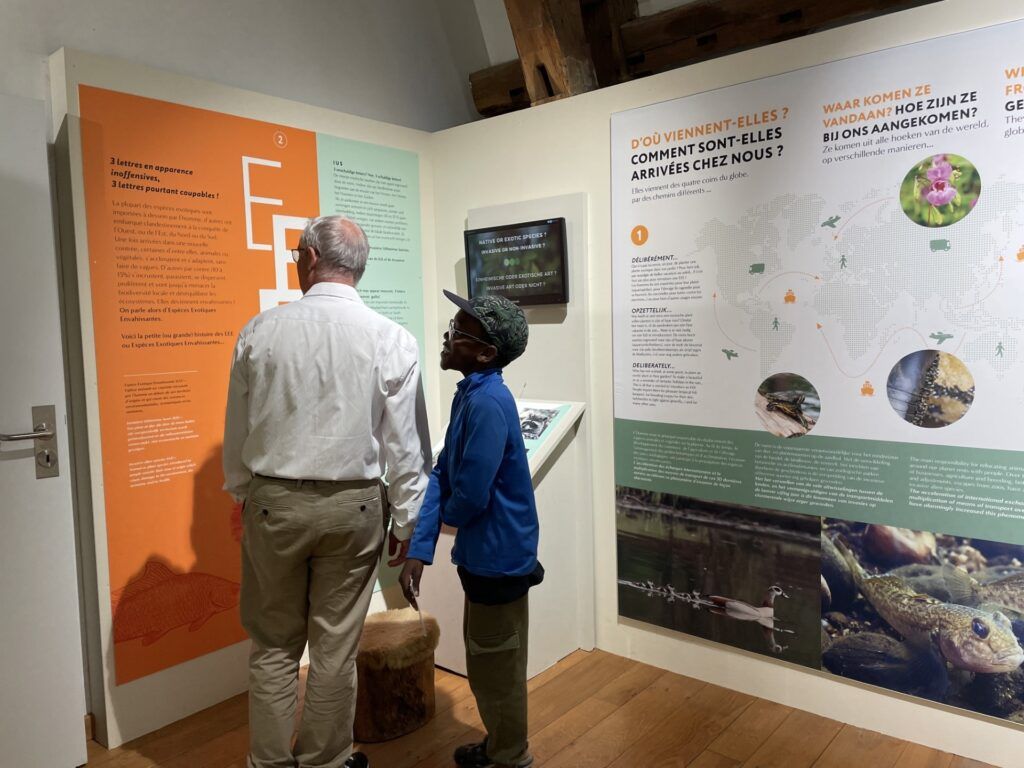
“Be careful! An exotic species can live here and not cause a problem,” explains Philippe Struys. “It is therefore not considered invasive.” This is the case of the mandarin duck (native to Southeast Asia) or the oleander (from the Mediterranean).
How did they arrive?
Invasive alien species are therefore plants or animals that arrive in a place where they are not native, such as Belgium. This is almost always due to human activity, whether intentional or not! Here is how they can arrive:
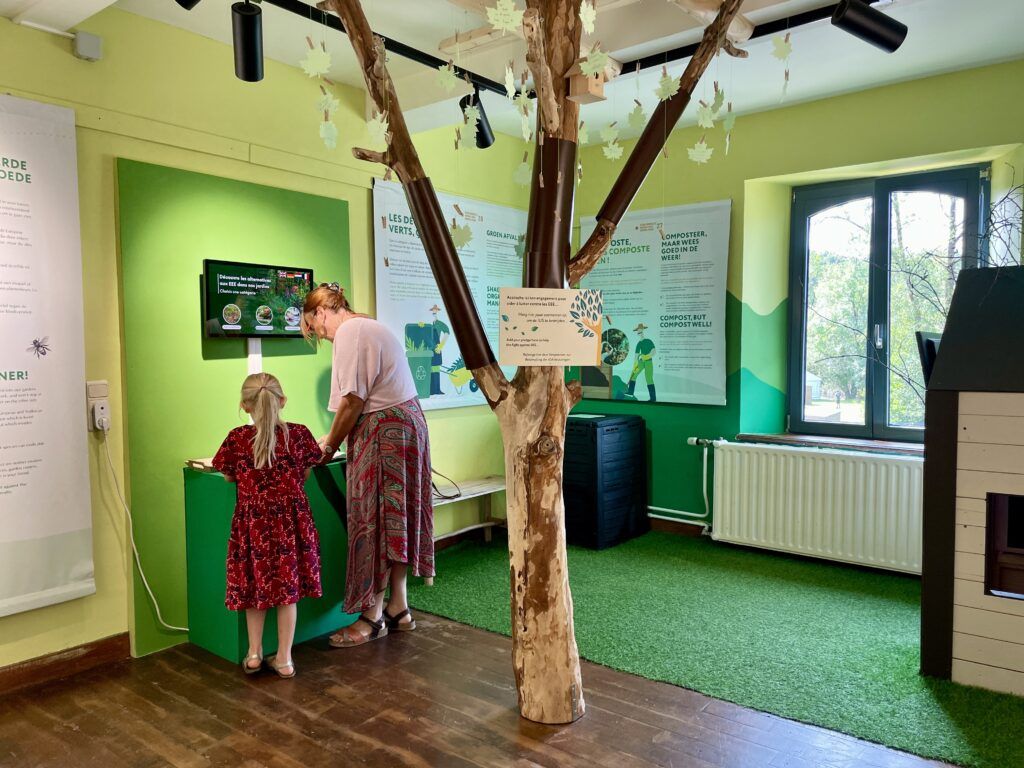
- Travel with people : People sometimes import plants or animals from other countries for gardens, zoos or aquariums. These species can sometimes escape human control and begin to spread in the wild.
- Transport of goods : When goods are transported from one country to another, seeds or small insects can accidentally end up in packages or containers and arrive in Belgium and spread. Some marine species, such as crustaceans, travel stuck to the hull of boats!
- Gardening : Some people plant exotic plants in their gardens. If these plants spread, they can move out of the gardens and invade natural areas. For example, Japanese knotweed is a huge problem here! It is an indestructible plant, with 7-metre roots, and which spreads everywhere. Uprooting campaigns are organised with excavators. But if we forget 1cm, hey presto, the little piece quickly becomes a huge plant again. It has completely invaded Wallonia.
Why are some species problematic?
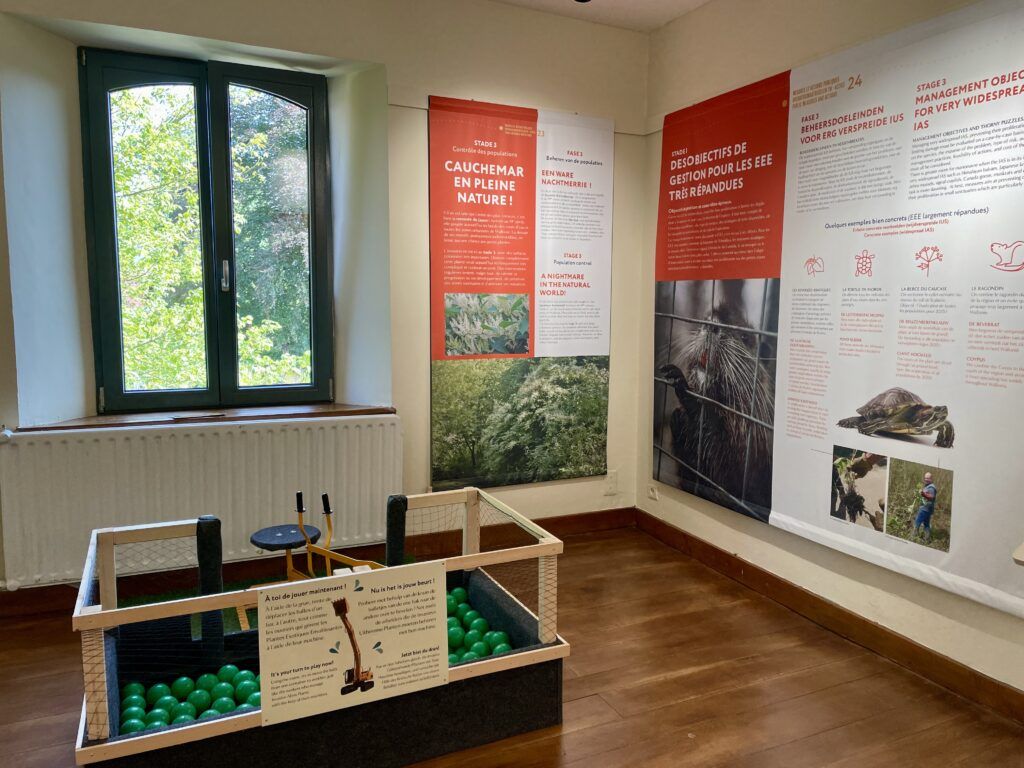
- Competition with local species : Invasive species can spread quickly and take over the plants and animals that already live there. For example, an invasive plant can choke out local plants and take their place, or invasive animals take over (keep for themselves) the food and habitats of other insects and animals. Some invasive animals are also new predators for our species.
- Change of habitats : Some invasive species change the environment in significant ways. For example, they can change the soil, river water, or the structure of forests, which can be bad for the animals and plants that live there.
- Problems for humans : Invasive species can also cause problems for people. For example, some plants may be poisonous or allergenic, and some animals can damage crops or infrastructure, or spread diseases.
The case of the raccoon
How cute he is, with his little stuffed head! However, the raccoon is the invasive exotic species that poses the most problems in our country. “It does a lot of damage, entering houses and destroying habitats. It spreads diseases, can be very aggressive, and is also a danger to other species. To feed, it empties nests and ponds, feeding on chicks and frogs.”
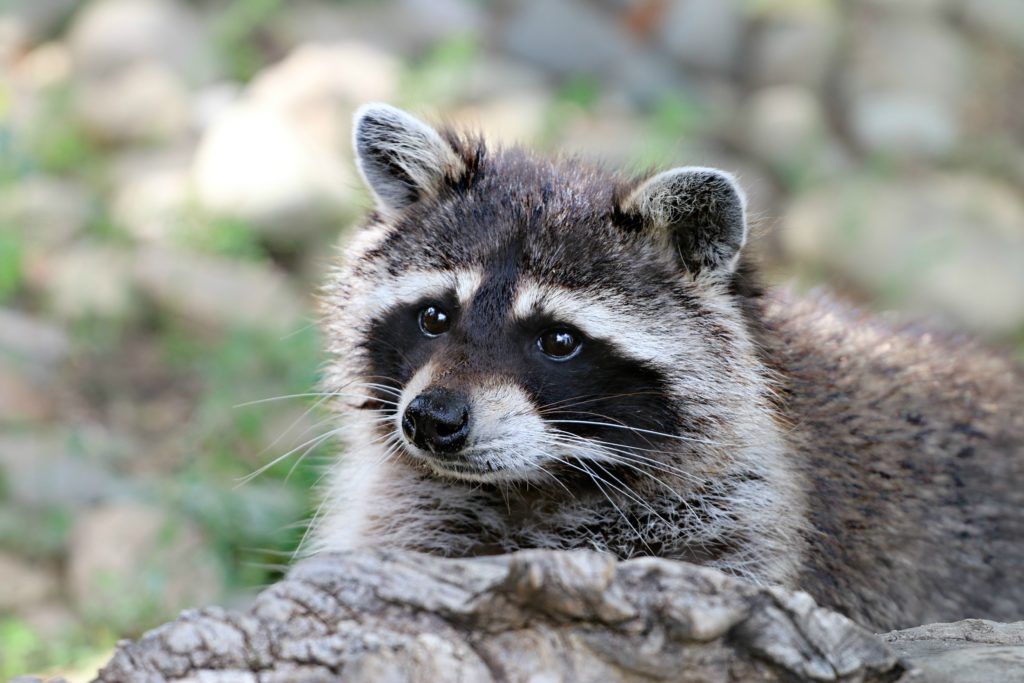
Although the raccoon has been with us since the 1940s, it has only been a major problem for about ten years. It is developing far too much because it has no predators like in its countries of origin. “It’s hard to explain to children that we have to regulate (control) their spread and sometimes euthanize them; but it’s important that they understand why.”
In Wallonia, there are approximately 1,500 invasive species, including 150 called “invasive”. If we want to preserve our nature, we must continue to work hard!
And you, do you understand that sometimes we have to control the spread of certain species to protect others?
STOP INVASIONS!
Until January 3, 2027
Info: RIVEO asbl – Rue Haute 4 – 6990 Hotton
084/41.35.71 – [email protected] – www.riveo.be

